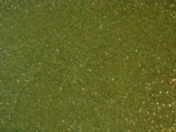Photoluminescence is the process where a material absorbs photons (unit of light) then emits photons. There are types of photoluminescence. Resonant radiation immediately emits the photons absorbed in the matter of nanoseconds.
Fluorescence absorbs lights and re-radiates it at a longer wavelength causing the glow to last longer. This is used in fluorescent lights of course, some minerals flouresce, and it is also the science behind forensic tests for blood and fingerprints that you might see in - insert favorite crime show here.
Phosphorescence doesn't re-radiate immediately. It goes through "forbidden" (very inefficient process in quantum mechanics) energy states allowing it to re-radiate very low energy over a much longer period. This is where you get glow-in-the-dark toys, paints, shoes...
These are not the same as glowing plankton and firefly butts which are bioluminescence and a chemical reaction. And definitely not related to efflorescence even though they rhyme.
So in the building product world phosphorescent material are being used in different ways. With anything that glows there is a fine line between cheesey and cool so you may have to have an open mind.
The picture above is The Give Back Curtain from KVA. Photoluminescent pigments are added to the fibers so the curtain can recycle ambient light. These guys have been doing other experiments with types of glowing light. Search through their projects for more.
And in a more practical application, the technology is being used in safety materials such as stair nosing and exit signage. Johnsonite has a product called Safe-T-First that covers any kind of glowing safety stripping you might need for stairwells and exiting safety.




Awesome blog and its well written to understand it.
ReplyDeletephotoluminescence and fluorescence